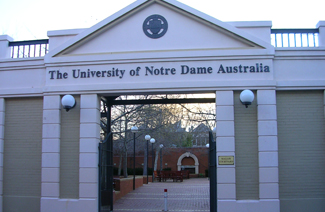3月10日
“How Cooperation Defeats Cheats”
By Clarie N.Spottiswoode
In the spring of 1879, Hermann Lau shot two white-winged choughs, Corcorax melanorhamphos, off their nest in Queensland, Australia. He watched as additional choughs continued to attend the nest, proving that a cooperative group shared parental care. Since then, cooperatively breeding birds have had a starring role in efforts to explain the evolution of complex animal societies. We now know that “helpers-at-the-nest” who forgo reproduction are often relatives of the breeding pair. Genetic payoff is, thus, one of several advantages that helpers can gain from their superficially altruistic behavior. Feeney et al. show that collective defense against brood parasites (see the figure) can enhance such benefits of cooperation.
Feeney et al.’s study is built on the premise that brood parasitism—reproductive cheating by species such as cuckoos and cow-birds which exploit other birds to raise their young—is a severe selection pressure on their hosts’ breeding strategies. Parasitized parents typically not only lose their current offspring but also waste a whole breeding season raising a demanding impostor. The best way to avoid parasitism is to repel adult parasites from the nest. Feeney et al. show that sociality can be pivotal to this process. The authors begin by unfolding a new map. Using data compiled by BirdLife International, they show that the global distribution of cooperatively breeding birds overlaps strikingly with that of brood parasites. This overlap need not reflect a causal relationship: The same unpredictable environments that favor cooperation could also favor alternative breeding strategies such as parasitism. However, the authors go on to show that even within geographical regions rich in both parasites and cooperators—Australia and southern Africa—cooperative breeders are much more likely than noncooperative species to be targeted by brood parasites.
To determine the reasons for this correlation, Feeney et al. studied cooperative breeding in superb fairy-wren (Malurus cyaneus) in Australia. Horsfield’s brood-cuckoos (Chalcites basalis) should benefit from targeting larger groups of fairy-wrens because more helpers mean faster chick growth. Yet data from a 6-year field study show that in practice, cuckoos rarely experience this advantage, because larger groups of fairy-wrens much more effectively detect and repel egg-laying intrusions by cuckoo females, mobilizing group defenses with a cuckoo-specific alarm call. Thus, cooperation and parasitism could reciprocally influence one another: Cooperators might be more attractive target because they make better foster parents, but once exploited by parasites, they are also better able to fight back, helping cooperation to persist. Feeney et al. find that superior anti-cuckoo defenses in larger groups account for 0.2 more young fledged per season on average than smaller groups--a substantial boost given the fairy-wrens ‘low annual fecundity.
These results show convincingly that defense against brood parasites augments the benefits of helping, promoting the persistence of cooperation. But as the authors note, they cannot reveal what caused cooperation to evolve initially Brood parasitism alone cannot resolve the question of why some birds breed cooperatively. For example, cooperative kingfishers and bee-eaters are heavily parasitized in Africa but not in Australasia, showing that other advantages of helping behavior are sufficient for cooperation to persist. But we should take parasitism seriously as an important force in a cooperative life. Indeed, it may provide a mechanism contributing to the previously discovered global correlates of cooperation.
文章概述:
本文介绍了红嘴山鸦的合作(利他)行为与它们遭受寄生虫入侵的关系。研究发现,红嘴山鸦的合作与寄生虫的入侵是相互作用的,当它们合作形成一个团体的时候,其更容易成为寄生虫的目标群体,但一旦寄生虫入侵,其亦能够进行强有力的反击。并且,合作群体的大小与受到寄生虫感染的可能性大小有一定的关系,越小的群体,受感染的几率越大,反之,群体越大,受感染几率越小。最后作者认为鸟类之间的合作和寄生物的入侵是有关系的,但这并不能有效解释红嘴山鸦是如何在进化过程中,形成这种合作行为的。
题目:
1. 主旨题 问作者这篇研究的目的是什么;
2. 作者文章中收集的data有什么样的作用;
3. 词汇题 reflect在文中的意思;
4. 词汇题 favor在文中的意思;
5. 独立取证题 问哪句话是文中作者提到的,群体数量对寄生物影响的证据;
6. 细节题 红嘴山鸦在繁殖中的特点;
7. 目的题 最后一段的作用;
8. 图表题 从第一个图表能得出什么关于群体大小和寄生的关系;
9. 图表题 从图表中能得出什么样的比对信息;
10.图表题 从第二个图表中能得出什么。
相关阅读

















